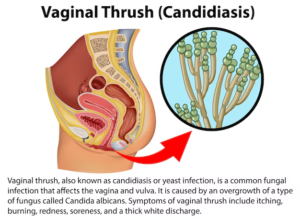Understanding Plantar Fasciitis Through Ayurvedic Medicine
Understanding Plantar Fasciitis Through Ayurvedic Medicine is a common condition characterized by pain in the heel and bottom of the foot. It occurs when the plantar fascia—a thick band of tissue that runs across the bottom of the foot and connects the heel bone to the toes—becomes inflamed. This condition can be quite debilitating, affecting daily activities and overall quality of life. While conventional treatments often focus on pain relief and physical therapy, Ayurveda, an ancient system of medicine from India, offers a holistic approach to understanding and treating plantar fasciitis.
What is Plantar Fasciitis?

Plantar fasciitis typically presents as a sharp pain in the heel, especially noticeable during the first steps in the morning or after prolonged periods of inactivity. The pain may decrease with movement but can worsen after standing or sitting for extended periods. This condition often results from factors such as:
- Overuse or repetitive stress
- Foot mechanics (flat feet or high arches)
- Obesity
- Improper footwear
- Sedentary lifestyle
In Ayurveda, plantar fasciitis is often linked to an imbalance in the body’s doshas—Vata, Pitta, and Kapha. Understanding these doshas is crucial for diagnosing and treating the condition effectively.
The Ayurvedic Perspective
Dosha Imbalance
- Vata Dosha: Associated with air and space, Vata governs movement in the body. An increase in Vata can lead to dryness, stiffness, and pain, which are often symptoms of plantar fasciitis.
- Pitta Dosha: Representing fire and water, Pitta is responsible for metabolism and transformation. An excess of Pitta can cause inflammation, contributing to the pain experienced in plantar fasciitis.
- Kapha Dosha: This dosha embodies water and earth, promoting stability and structure. A Kapha imbalance may lead to excess weight, putting additional stress on the feet.
The onset of plantar fasciitis can be viewed as a result of Vata and Pitta imbalances. Therefore, the Ayurvedic approach focuses on restoring balance through dietary changes, herbal remedies, lifestyle modifications, and therapeutic practices.
Ayurvedic Treatment Approaches
1. Dietary Recommendations
Diet plays a crucial role in managing dosha imbalances. Here are some dietary suggestions to help alleviate the symptoms of plantar fasciitis:
- Anti-inflammatory Foods: Incorporate foods rich in omega-3 fatty acids, such as flaxseeds, walnuts, and fish. Turmeric and ginger are excellent for their anti-inflammatory properties.
- Warm and Moist Foods: Favor warm, cooked foods that are easy to digest. This helps counteract the dryness associated with Vata. Avoid raw vegetables and cold foods that can aggravate Vata.
- Balanced Diet: Aim for a balance of all six tastes (sweet, sour, salty, bitter, pungent, and astringent) in your meals. This helps maintain overall dosha balance.
2. Herbal Remedies
Ayurvedic herbs can be incredibly effective in treating plantar fasciitis. Some recommended herbs include:
- Turmeric (Curcuma longa): Known for its powerful anti-inflammatory properties, turmeric can be taken as a supplement or used in cooking.
- Ginger (Zingiber officinale): Ginger helps reduce inflammation and can be consumed as tea or added to meals.
- Ashwagandha (Withania somnifera): This adaptogenic herb helps manage stress and inflammation. It can be taken in powder form or as capsules.
- Boswellia (Boswellia serrata): Known for its ability to reduce inflammation, Boswellia can be used as a supplement to help manage pain.
3. Lifestyle Modifications
Implementing lifestyle changes can have a significant impact on the management of plantar fasciitis:
- Regular Stretching: Incorporate foot and calf stretches into your daily routine to improve flexibility and reduce tension in the plantar fascia.
- Footwear Choices: Choose supportive footwear that provides adequate arch support and cushioning. Avoid high heels and flat shoes that lack support.
- Weight Management: Maintaining a healthy weight can significantly reduce stress on the feet. Incorporate regular exercise that aligns with your dosha to achieve this.
4. Ayurvedic Therapies
Several Ayurvedic therapies can provide relief from plantar fasciitis:
- Abhyanga (Oil Massage): Regularly massaging the feet with warm oil (such as sesame or coconut oil) can improve circulation, reduce stiffness, and alleviate pain. This practice also helps balance Vata dosha.
- Panchakarma: This detoxification process includes treatments like oil baths and herbal steam treatments that can help alleviate pain and restore balance.
- Yoga and Pranayama: Gentle yoga poses and breathing exercises (pranayama) can enhance flexibility, strengthen muscles, and promote relaxation. Poses such as downward-facing dog and child’s pose can be particularly beneficial.
Mind-Body Connection
Ayurveda emphasizes the mind-body connection, and stress management is vital in treating chronic conditions like plantar fasciitis. Practices such as meditation, mindfulness, and deep breathing can help alleviate stress, which in turn can reduce inflammation and pain.
Conclusion
Plantar fasciitis can be a challenging condition to manage, but Ayurvedic medicine offers a comprehensive approach that addresses the root cause of the problem rather than just the symptoms. By focusing on dietary changes, herbal remedies, lifestyle modifications, and therapeutic practices, individuals can achieve significant relief from pain and inflammation.
It is essential to consult with a qualified Ayurvedic practitioner to create a personalized treatment plan that considers your unique constitution and specific symptoms. With dedication and the right approach, it is possible to restore balance to the body, alleviate pain, and enhance overall well-being.
Integrating Ayurvedic principles into your lifestyle can provide a holistic framework for not only managing plantar fasciitis but also improving your overall health and vitality. Whether you’re experiencing mild discomfort or severe pain, remember that healing is a journey, and embracing these practices can lead to a healthier, more balanced life.








Leave a reply